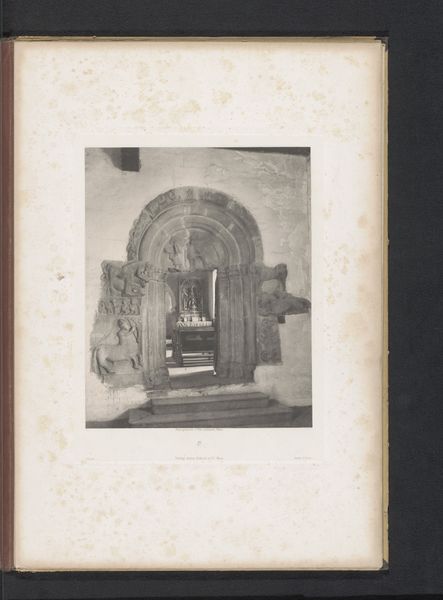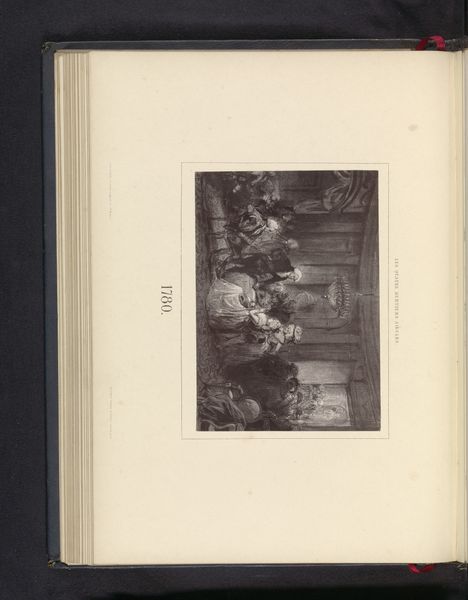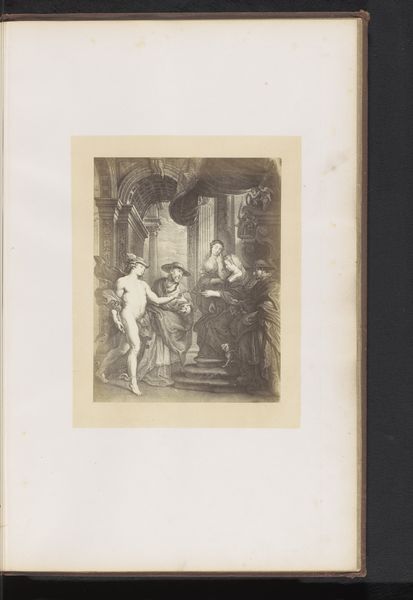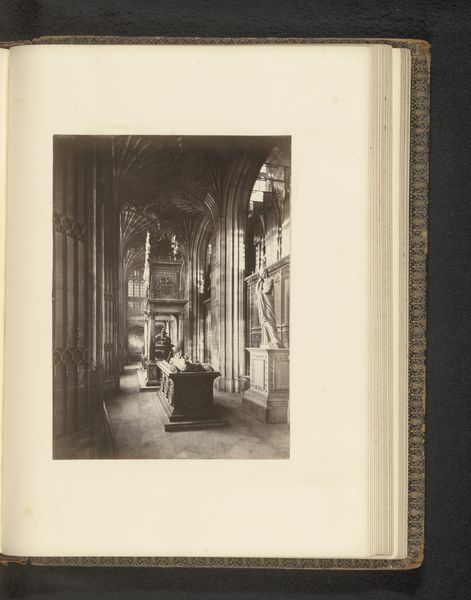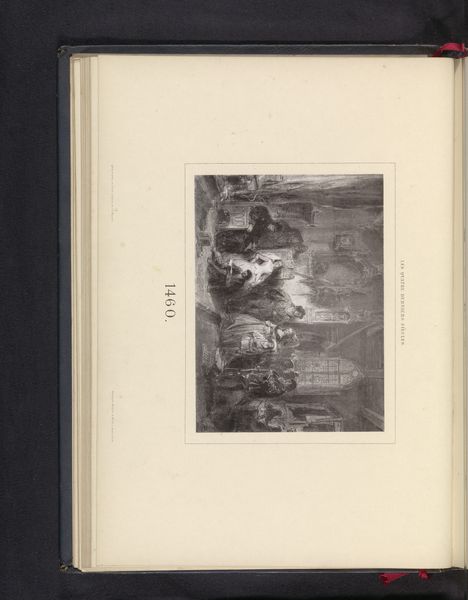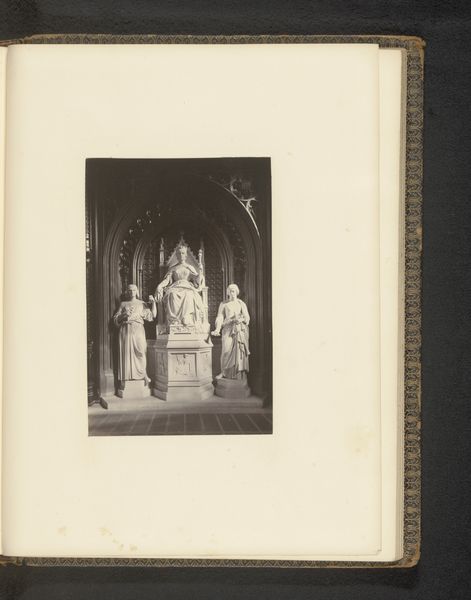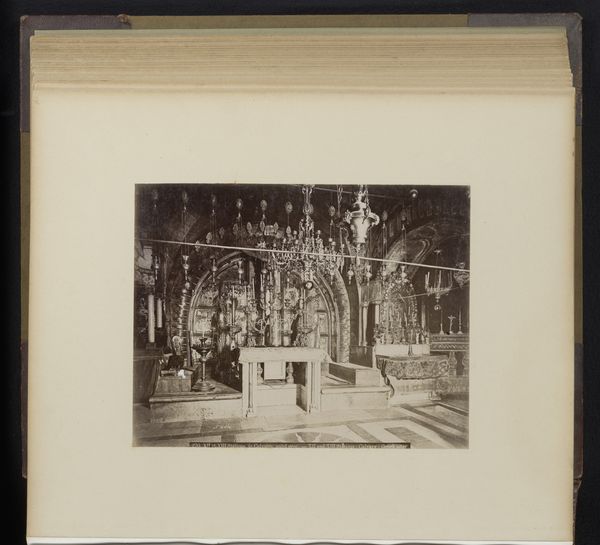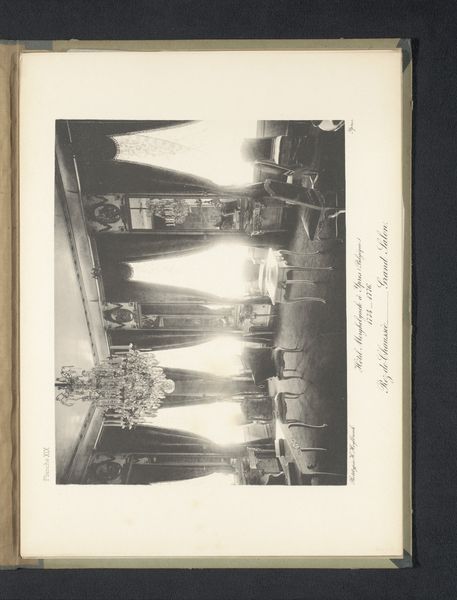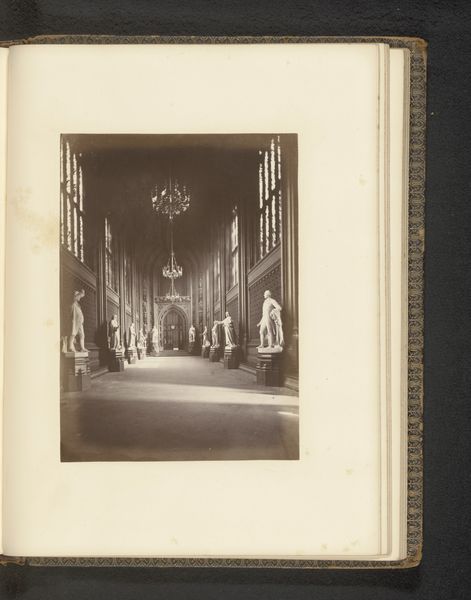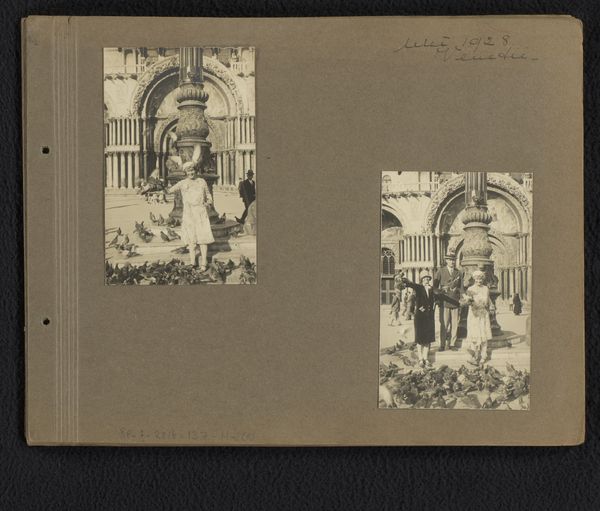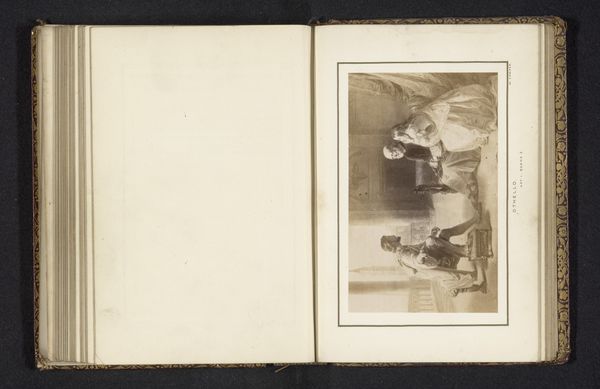
print, fresco, engraving, architecture
#
medieval
# print
#
fresco
#
history-painting
#
engraving
#
architecture
#
monochrome
Dimensions: height 242 mm, width 191 mm
Copyright: Rijks Museum: Open Domain
Curator: Looking at this monochromatic print capturing "Frescos in de kruisgang van de Dom van Bressanone, Italië" before 1893, the weight of history just pours out, doesn't it? Editor: It does project an antiquated sensibility, yes. The composition feels vertically oriented and segmented. There's a play of light and shadow, despite being an engraving, that creates depth. The frescoes definitely look medieval in their style. Curator: Indeed, there's that definite medieval character in the art's style. These frescos, painted in a church cloister, likely carried significant cultural meaning for their viewers. The arches in the print form visual gateways, perhaps signifying passages to different realms of understanding. Editor: The linear details forming the archways certainly divide and organize the overall pictorial field. They create a rhythm within what would otherwise be, pictorially, overwhelming in its density. I think that really focuses the narrative and establishes, too, a system of relationships. Curator: Absolutely. Consider also the significance of religious scenes during the period. The messages aren't simply aesthetic, they are mnemonic devices, imbuing the faithful with theological and ethical guidelines that would govern behaviour and inform community standards. They served a powerful, moralizing purpose. Editor: And note how those pictorial programs use specific, deliberate artistic structures: composition, perspective, the interplay between figure and space, to generate those particular, designed symbolic outcomes you're indicating. Curator: This print functions as a historical record—almost like an anthropological study preserved through art. Editor: Yes, a mediated record, which encourages an intriguing conversation about form and function. The very process through which these works exist encourages contemplation on a host of art historical questions. Curator: Indeed, a frozen moment allowing us to glimpse the long history and the symbolic power embedded in those cloister walls. Editor: A chance to decode how cultural transmission becomes embedded in structures of line, shape and volume across time.
Comments
No comments
Be the first to comment and join the conversation on the ultimate creative platform.
